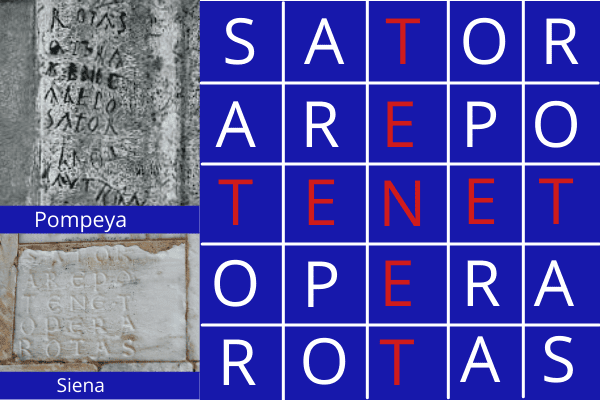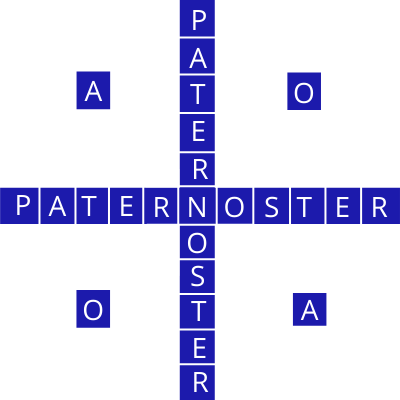Tenet explained: psychologically and spiritually
Tenet and our longing for God
Christopher Nolan’s film Tenet, analyzed in its psycho-spiritual dimension, shows a human aspiration. We will not tell the details of the story, which each one has to discover.
Outline of the plot and scientific foundations of Tenet
Tenet’s action revolves around a disturbing threat to humanity, one that transcends time. It oscillates between the past, the present and the future, with the illusory desire to change what has already happened.
It is worth entering the film by recalling the 3 principles of thermodynamics. Perhaps we are a little overcome by thinking of that matter that is neither created nor destroyed, but only transformed (first principle). We do not easily grasp that everything moves towards a greater disorder or entropy, without it being possible to reverse it, that the entire universe travels towards its end (second principle). Nor is it easy to understand that the entropy of a system approaches a constant value, or that “absolute zero” cannot be reached in a process with a finite number of stages (third principle).
The second of these principles is the most important for understanding the film. To this law are added statements of Quantum physics, which may be even further away from our intuitive understanding. Modern physics tells us about matter and antimatter, about negatively charged electrons that, when they meet their mirror or positron, are annihilated in the encounter…
But Tenet’s biggest complication is in the timeline. Nolan hypothesizes that, if we convert the particles of an object or an individual into antiparticles, we could control time. That’s why the scenes run in both directions and it’s possible to go back to the past. If a character bumps into himself at another moment on the timeline, he is annihilated.
Tenet as a reflection of human aspirations
How many people would want to do like the characters in Tenet! Controlling time, changing the consequences of actions, starting over or avoiding past suffering are desires we share.
Moving backwards in time is impossible in this life, but their desire makes us glimpse something real: we always aspire to more. We would like the good to never end and to live happily ever after. There is at the same time something inside us that seeks to escape, to cast off the shackles to the beyond.
Tenet’s story is not Tolkien’s fantasy world in the Lord of the Rings. Nor is it the futuristic fiction of Star Wars. It is, we might say, the human soul showing its deepest aspirations: the goodness of an immortal, not a solitary existence.
Tenet’s Latin Palindrome
In Tenet there are 5 names written in Latin. The first is the same title Tenet, from the verb tenere: to sustain. Then we find Sator, the Russian trafficker who wishes to annihilate the world, and who is translated as the sower, the generator or divine father, or creator.
Also Thomas, with his surname Arepo, author of a false painting attributed to Goya, carefully watched over by Sator, appears. Arepo appears only once in Latin literature, and could come from the Greek “alpha and omega” or from the Latin arepos, which indicated a certain type of chariot, or be an acronym: Aeternus Rex Excelsus Pater Omnipontes (Eternal King Almighty Father Omnipotent: see in indaginiemisteri).
Then we look at Opera, the first scene of the film: the Kiev Opera House, which will be destroyed, or the same work (opera) of art painted by Arepo. Opera comes from the Latin word for work, and indicates something done with care and attention.
Finally, the security company in Oslo, which is in charge of guarding the famous painting, is called Rotas, from the Latin wheel or celestial sphere.
We see a palindrome formed frequently since medieval times: Sator Arepo Tenet Opera Rotas. According to Nolan’s film, it could be read simply like this: Sator has Arepo’s work in the company Rotas. But there is room for other readings: The creator carefully holds his works or the turn of the world.
The oldest example of this palindrome was discovered in 1936, in the gymnasium of Pompeii, built in the 1st century A.D. If it is arranged as a square, it can be read in all senses. And, in the center of that square, the word Tenet appears in the form of a cross.
The letters, as described by Felix Grosser in 1926, are the same as the Pater Noster (Our Father), the prayer taught by Jesus of Nazareth 2000 years ago. Two “a’s” and two “o’s” remain: alpha and omega (beginning and end).
Tenet and a Christian existence
The story of Jesus Christ did not end with his death, but he rose again. That resurrection is a sign and a foretaste of what will happen to our bodies. After the resurrection, space and time do change, and are no longer impenetrable.
In Tenet there is a moment when the protagonist rebukes Sator for wanting to destroy the world: “you are a demon”, he tells him. To which Sator responds: “or a God…” In effect, whoever controls space and time is outside of those dimensions of matter.
Nolan’s system is an unrealizable hypothesis, but the Christian knows that, through union with Christ, he will effectively overcome space and time. Even in this world there are those who are freed at times from material barriers, in the so-called mystical phenomena, are able to appreciate different colors and sounds (as in the film Tenet), to heal at a distance, to move to distant places…
Tenet’s internal coherence beyond matter
The search for coherence that we observe in Tenet, with its complicated passage from one temporal pincer to another, wants to be faithful to the complex order of the universe, and even of our psychic processes.
In Tenet, people who are in the process of “reversing”, reviving their past, need oxygen. Life in the spirit could be like a “soul inversion”, moving away from body and matter and coming to understand more clearly the intelligent rules that guide what happens. For this kind of existence, which looks at others and at God, natural air is not enough to fill the lungs, a different oxygen is needed: grace of God.
Most human beings seek that oxygen in a divine and creative Absolute. There are those who find it in nature or in other idols, and perhaps aspire to a reincarnation in a being of growing dignity.
The Judeo-Christian tradition finds oxygen in a creator and personal God who lovingly guides towards an afterlife. And to make it easier, it gives us a script: the Bible, beginning with the Old Testament.
Because it lacked greater clarity, God decides to become man and come down to earth. We have the New Testament, with Jesus Christ, the Word or Verb, eternal creator of time, descending into our temporary and limited history.
We cannot go to the past like in Tenet
Living in the past is complicated: it becomes difficult to breathe, as it happens to Tenet’s characters. That is why the Christian abandons his past in God’s mercy and takes care of the present, which is shaped by love. When he thinks of the future, he does not try to change what has already happened, but is filled with hope and trusts in God’s providence or care for what he has created.
In the future we see not only cosmic destruction according to the second law of thermodynamics, but new life in Christ.
In Tenet the protagonist does not have a name, so that each viewer is introduced into the mystery. In existence everyone must also be introduced into the mystery, but with a name. A name that God knows and tells us in a low voice, adding: “smile, I’m filming you”.
Wenceslao Vial















